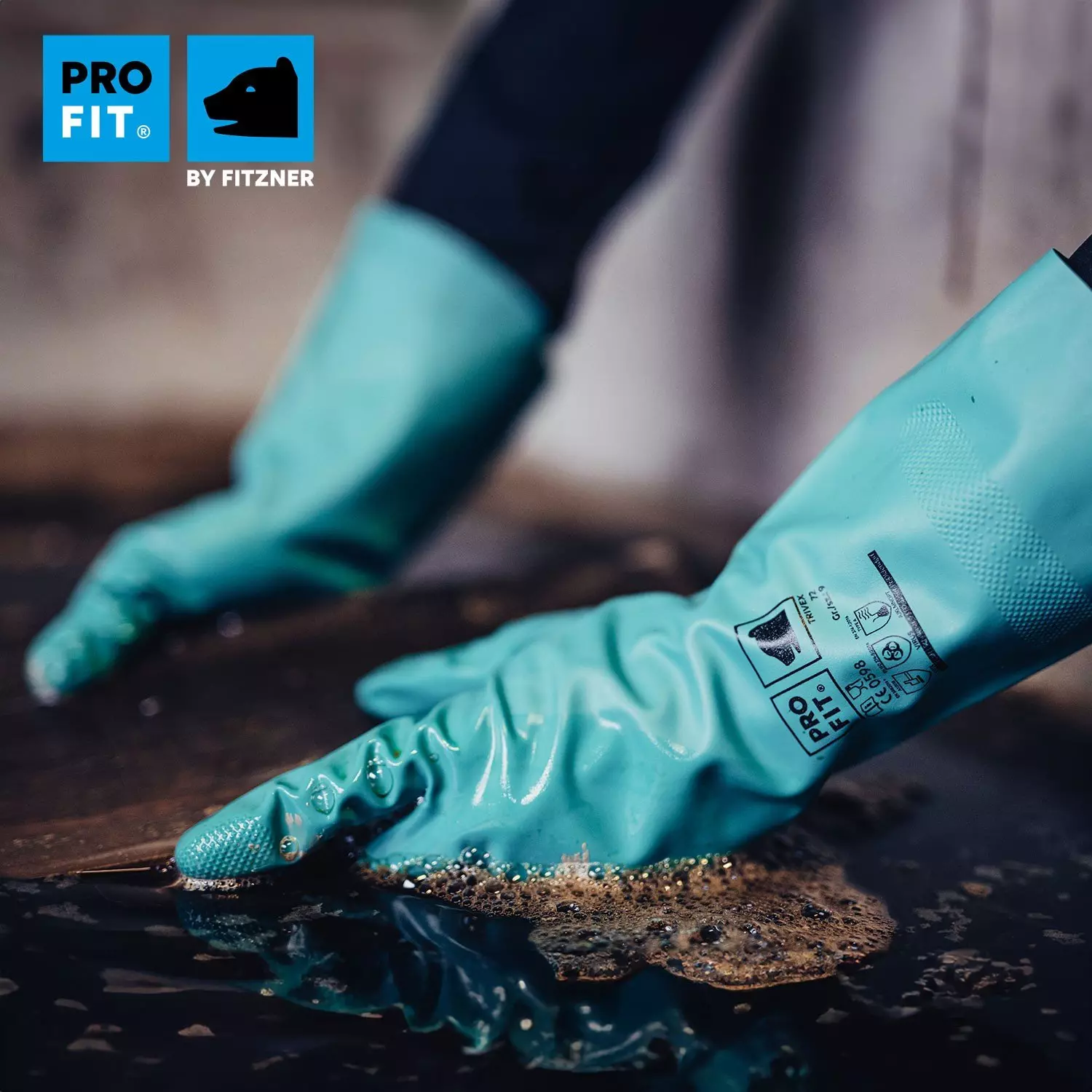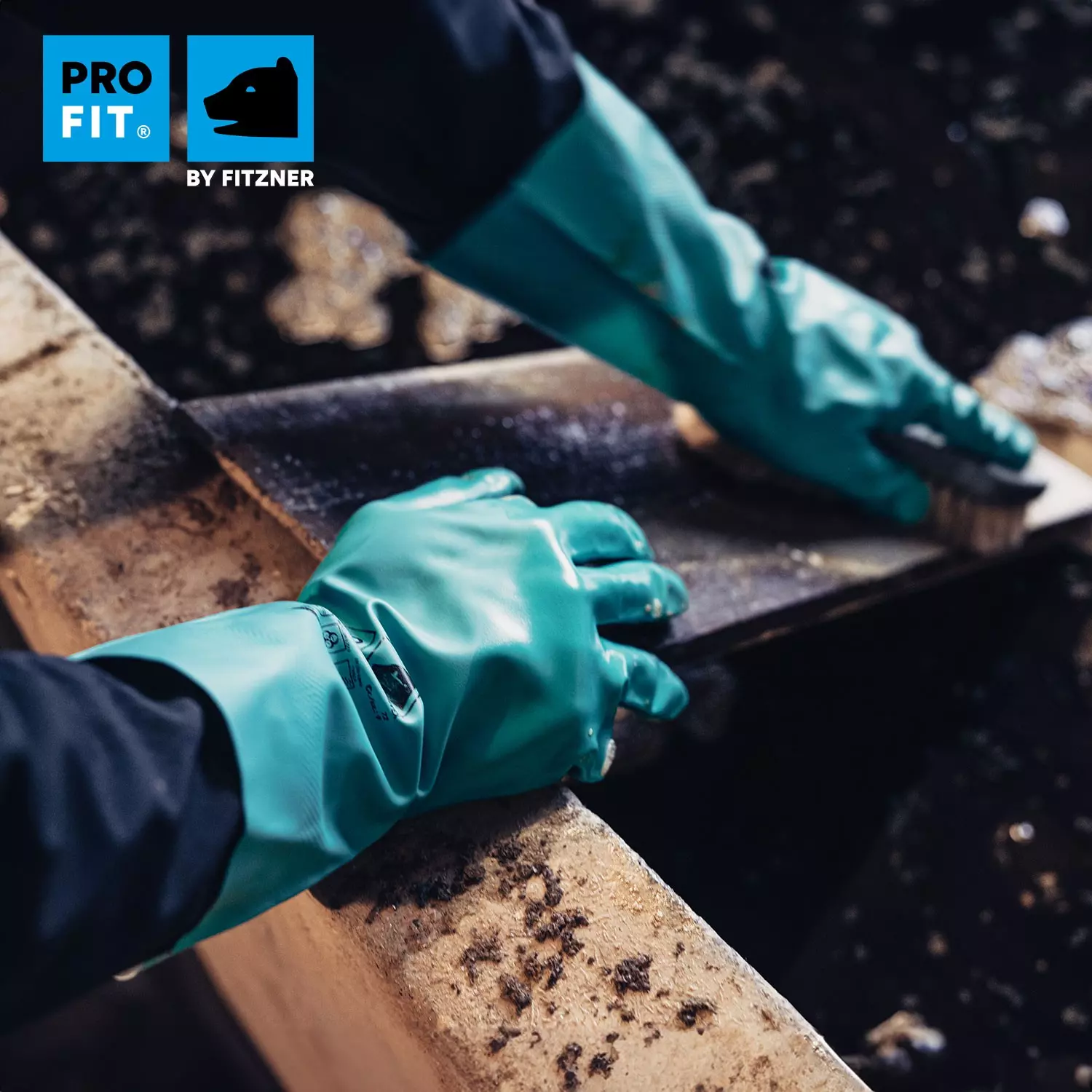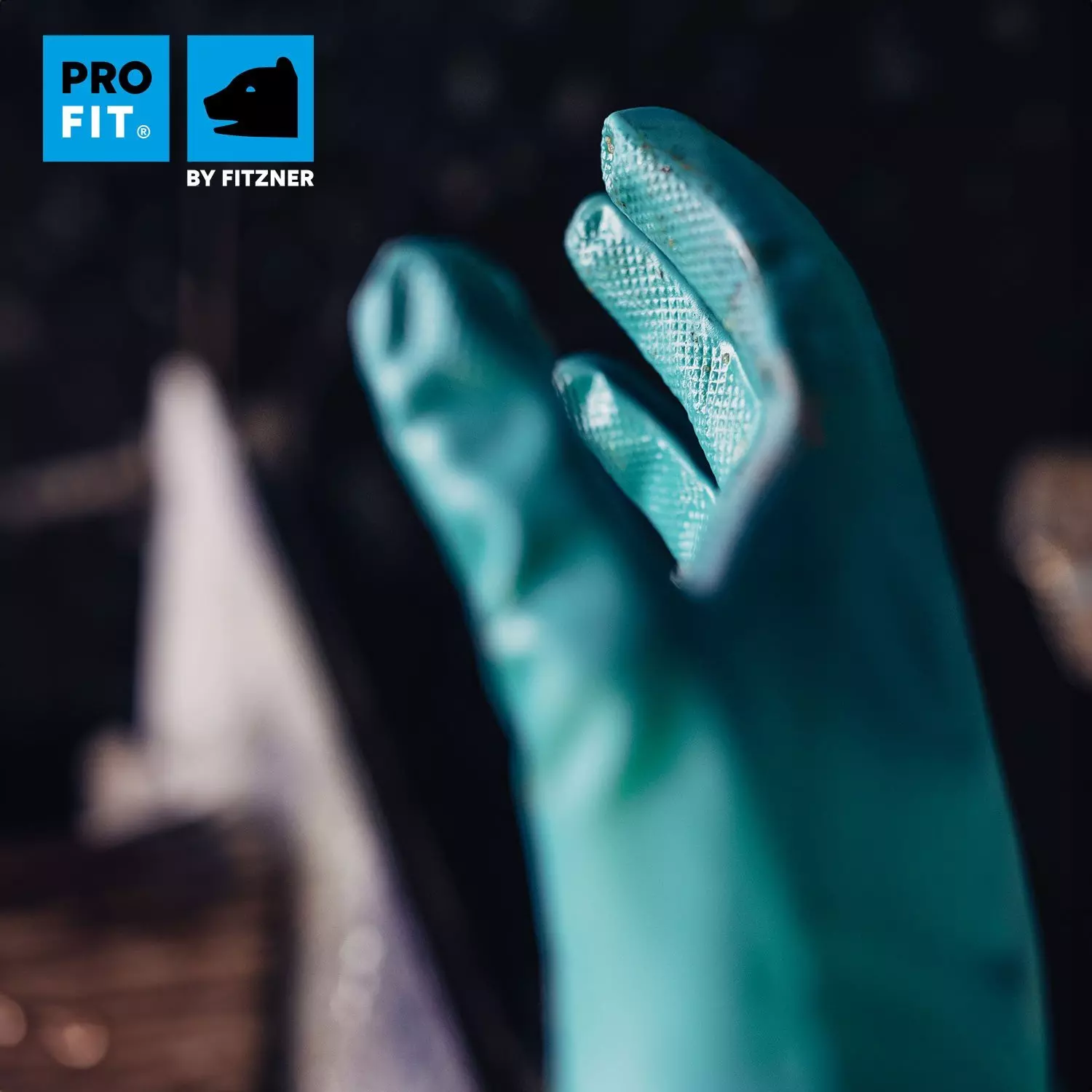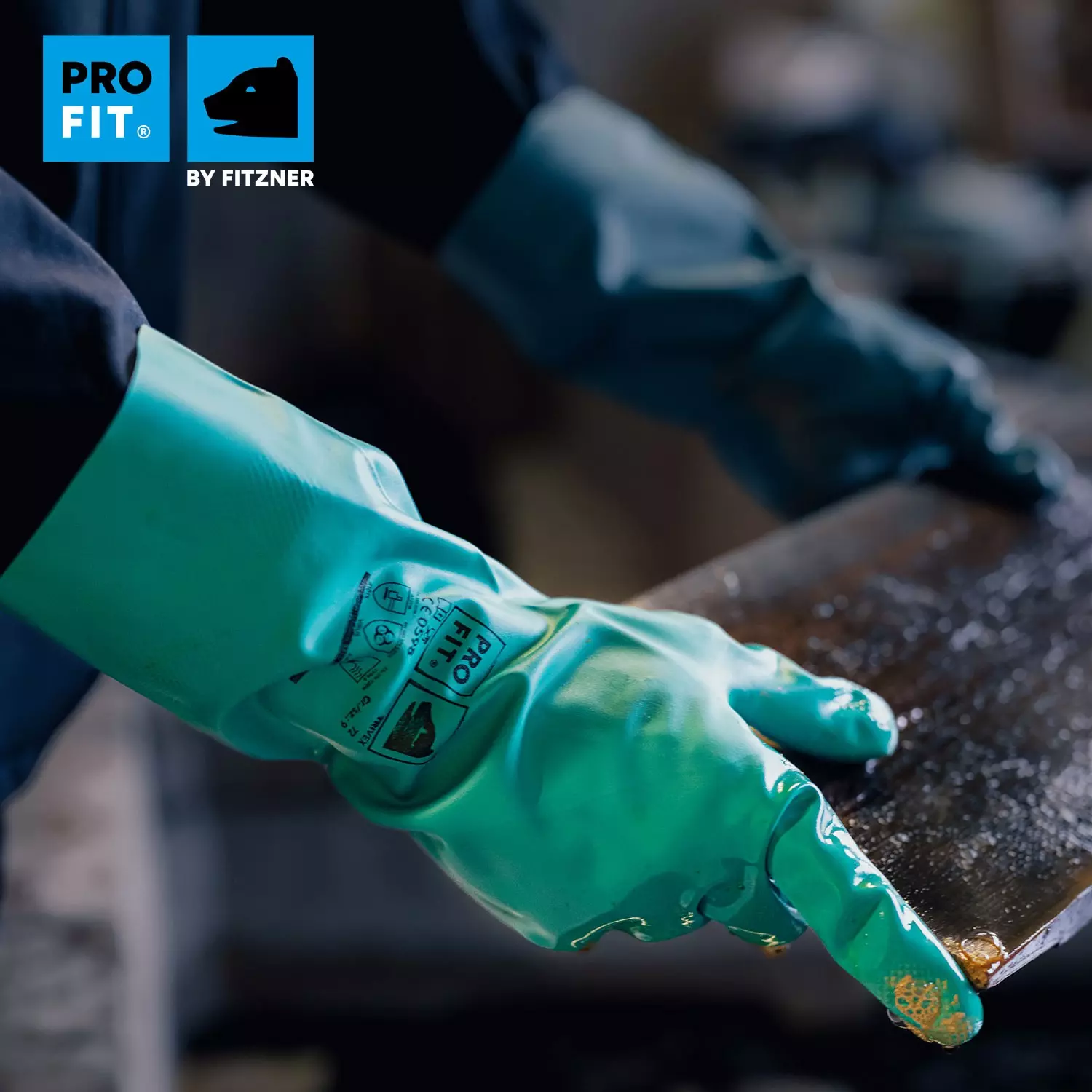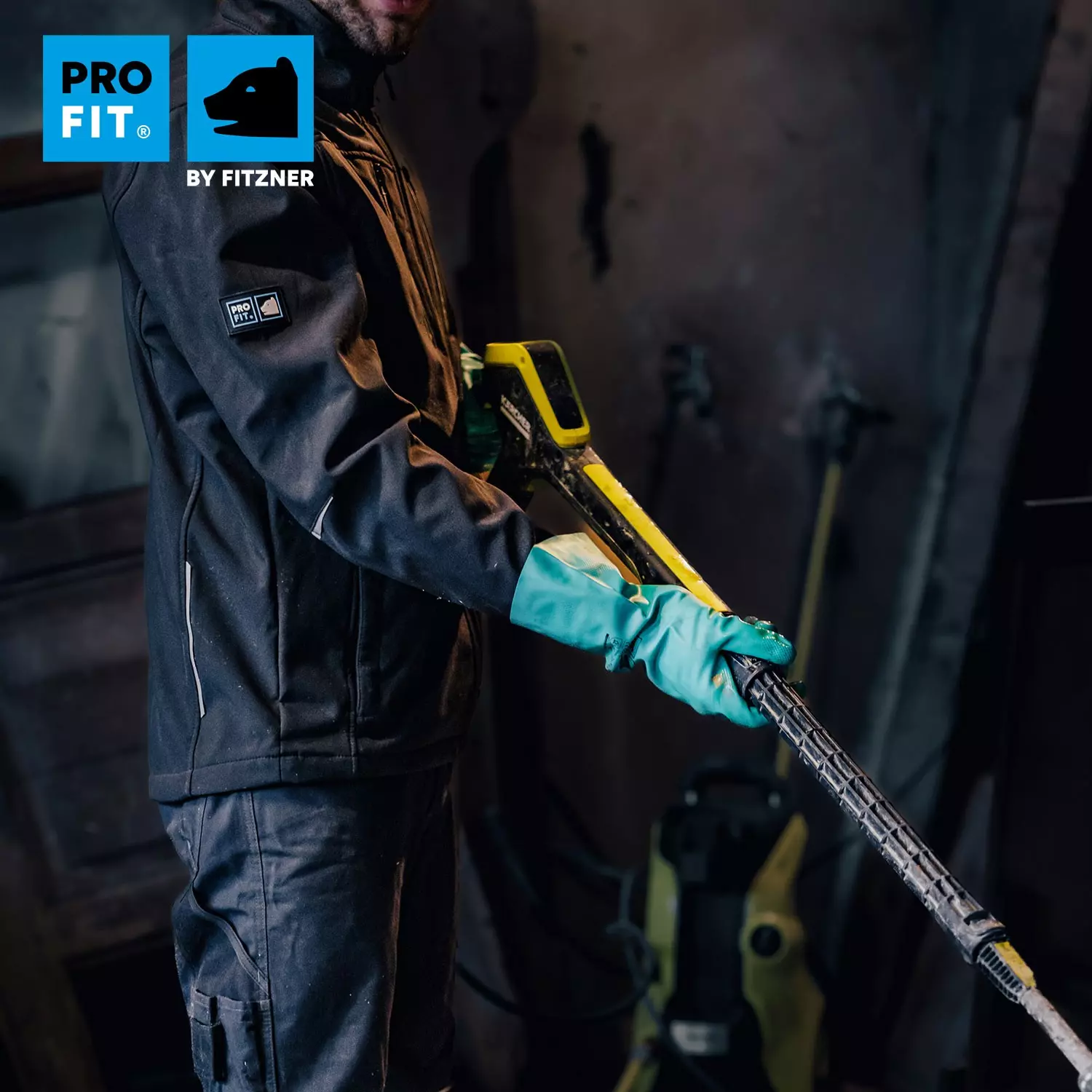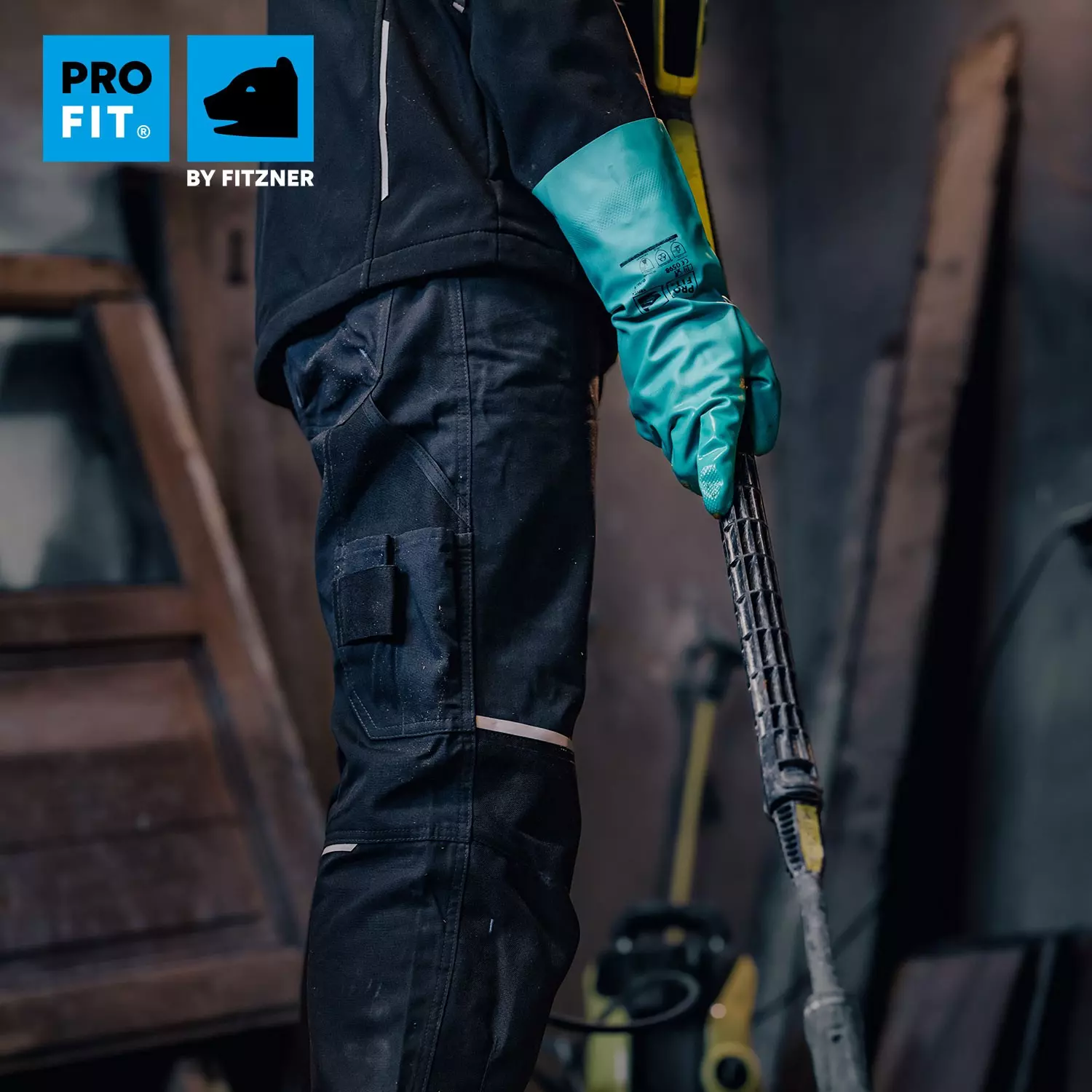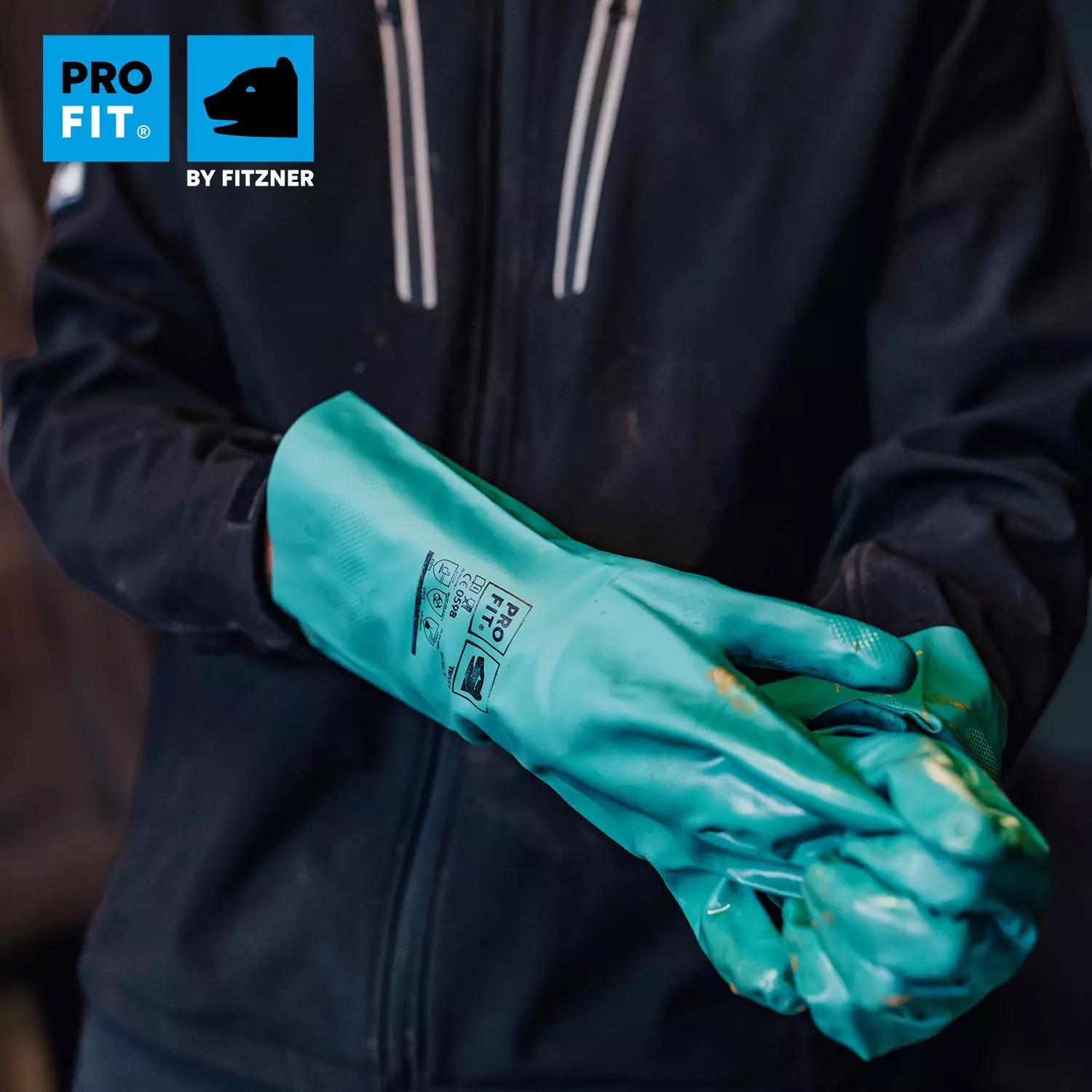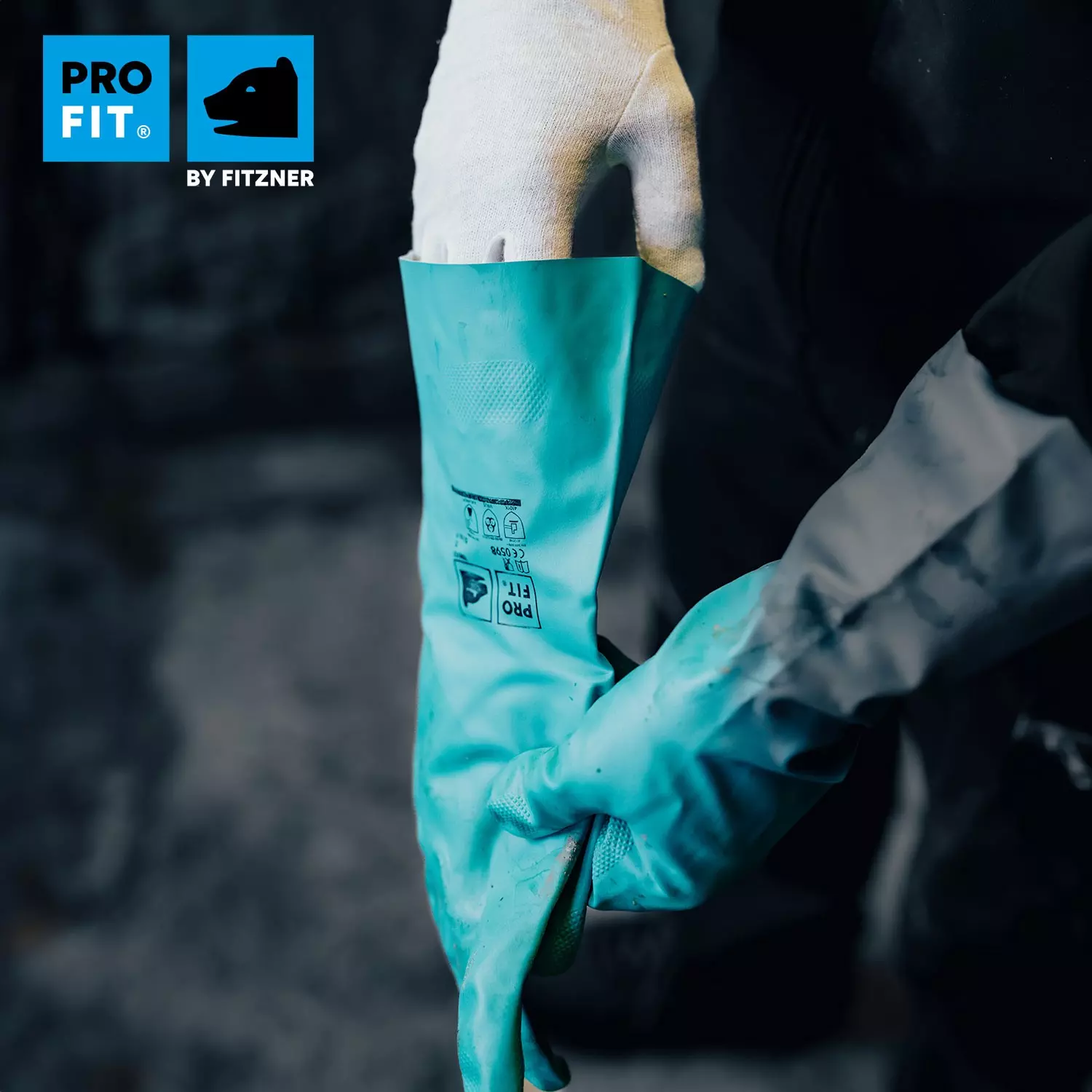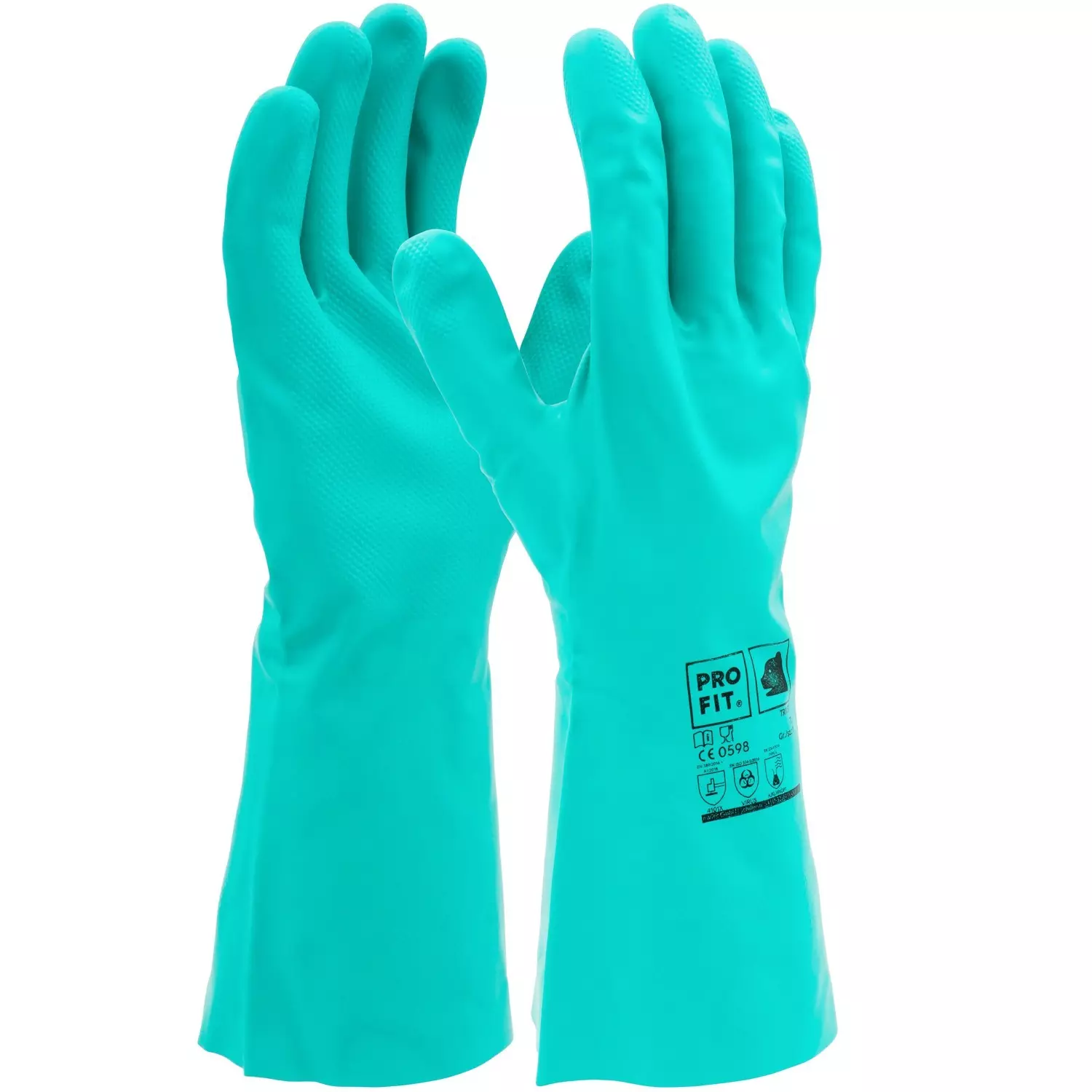
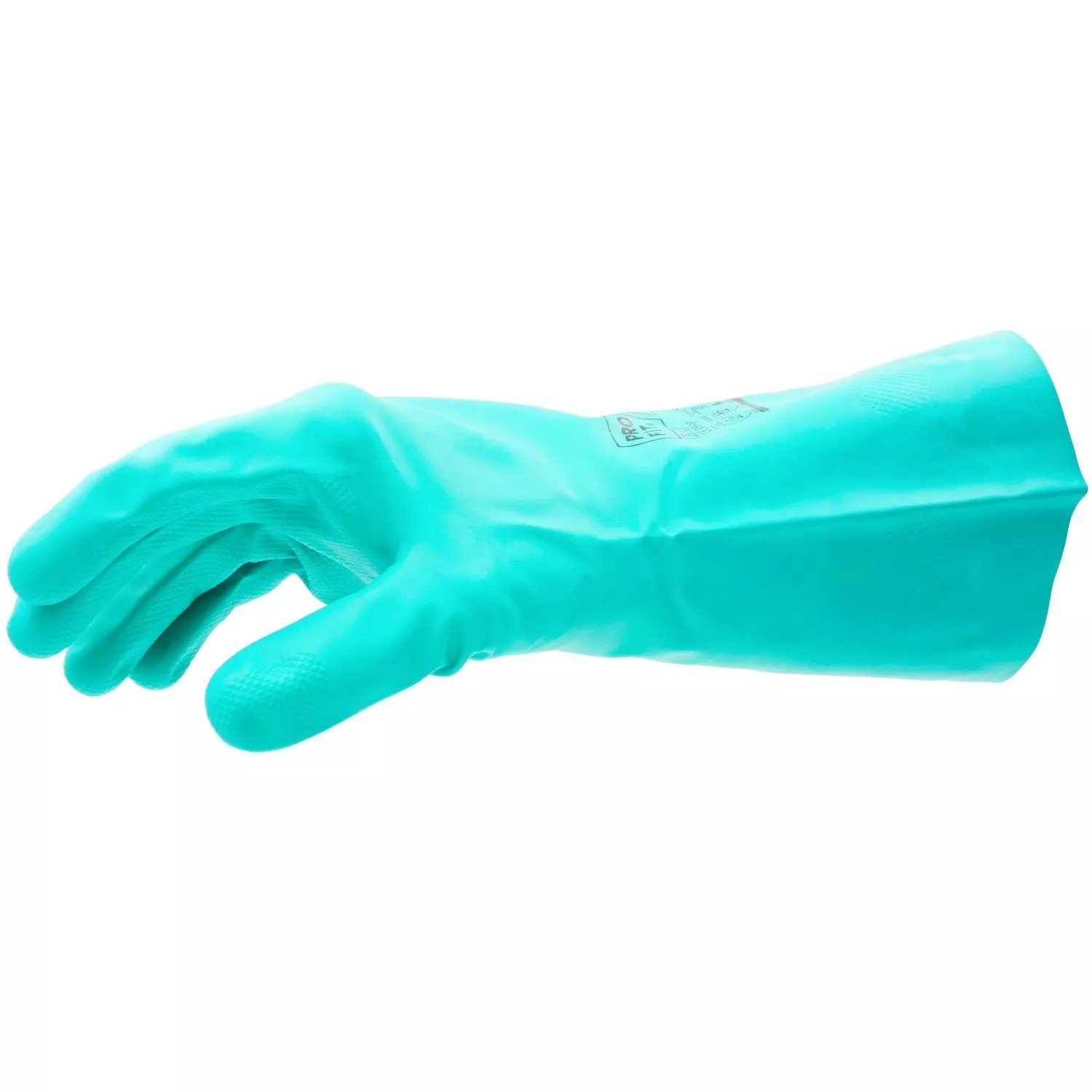
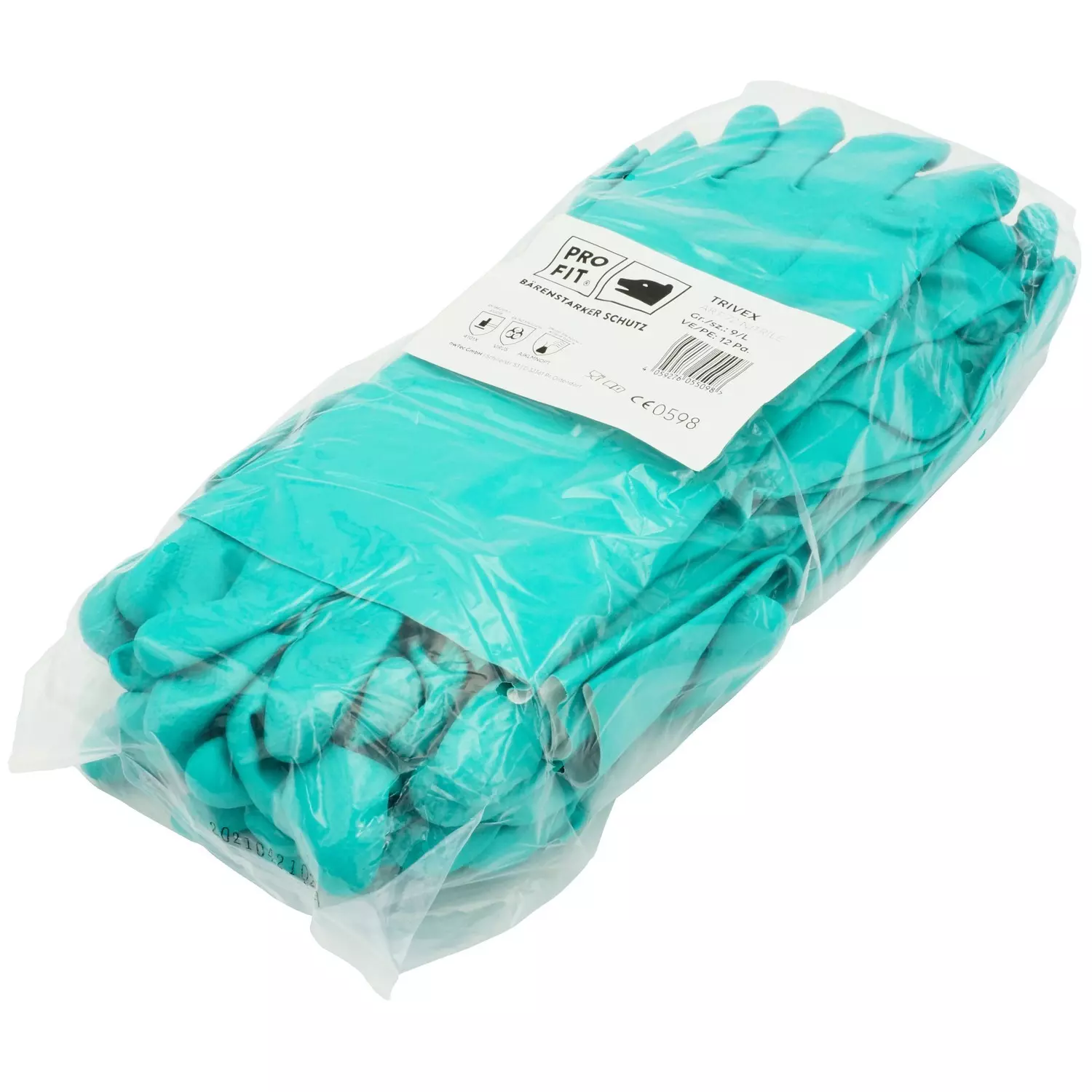
Features You'll Love
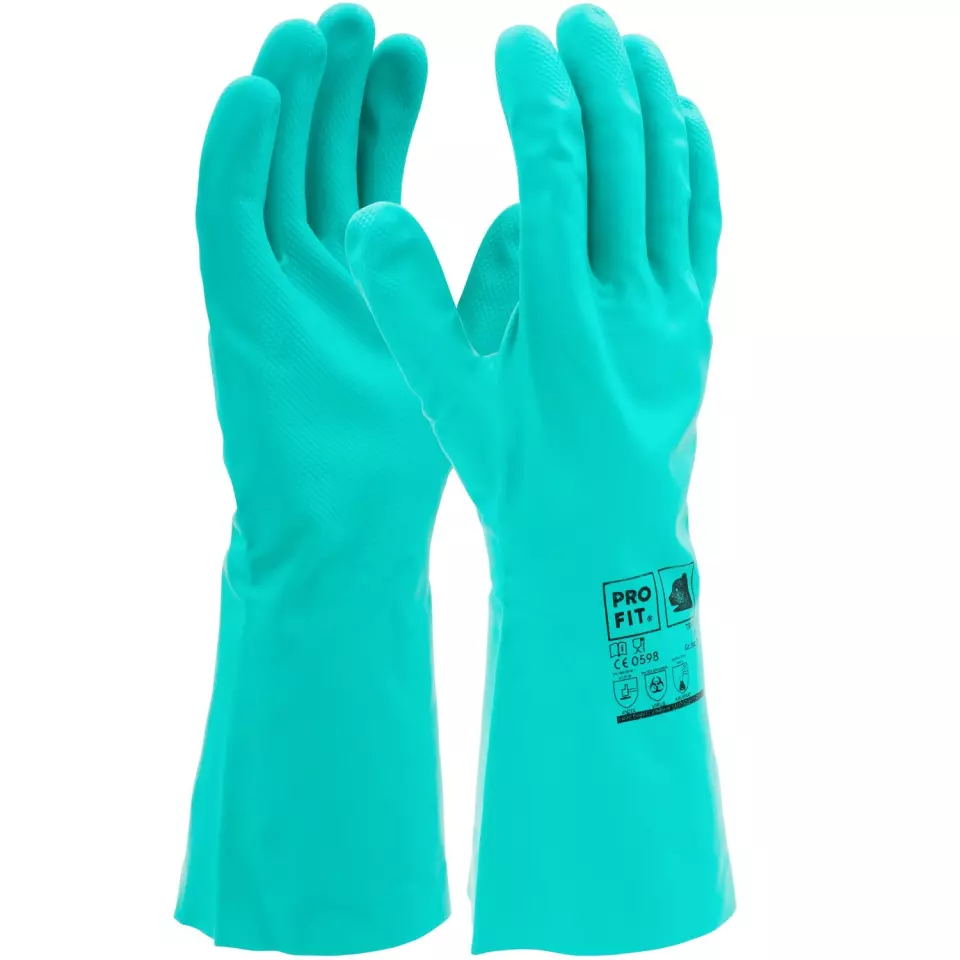
Coating Material · Nitrile
The material applied to glove surfaces to enhance grip, protection, and durability for specific work conditions and hazards.
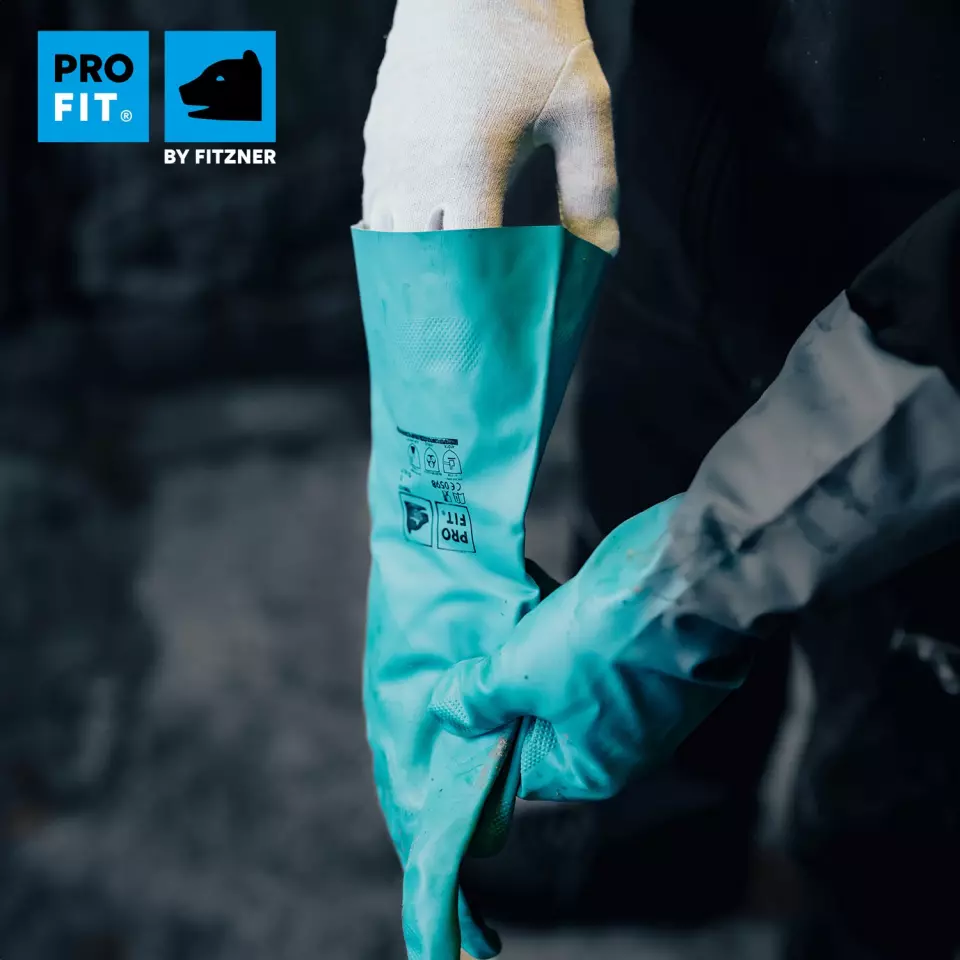
Liner Style · Flock Lined
The inner lining or coating that affects comfort, grip, insulation, and protection against chemicals or allergens.
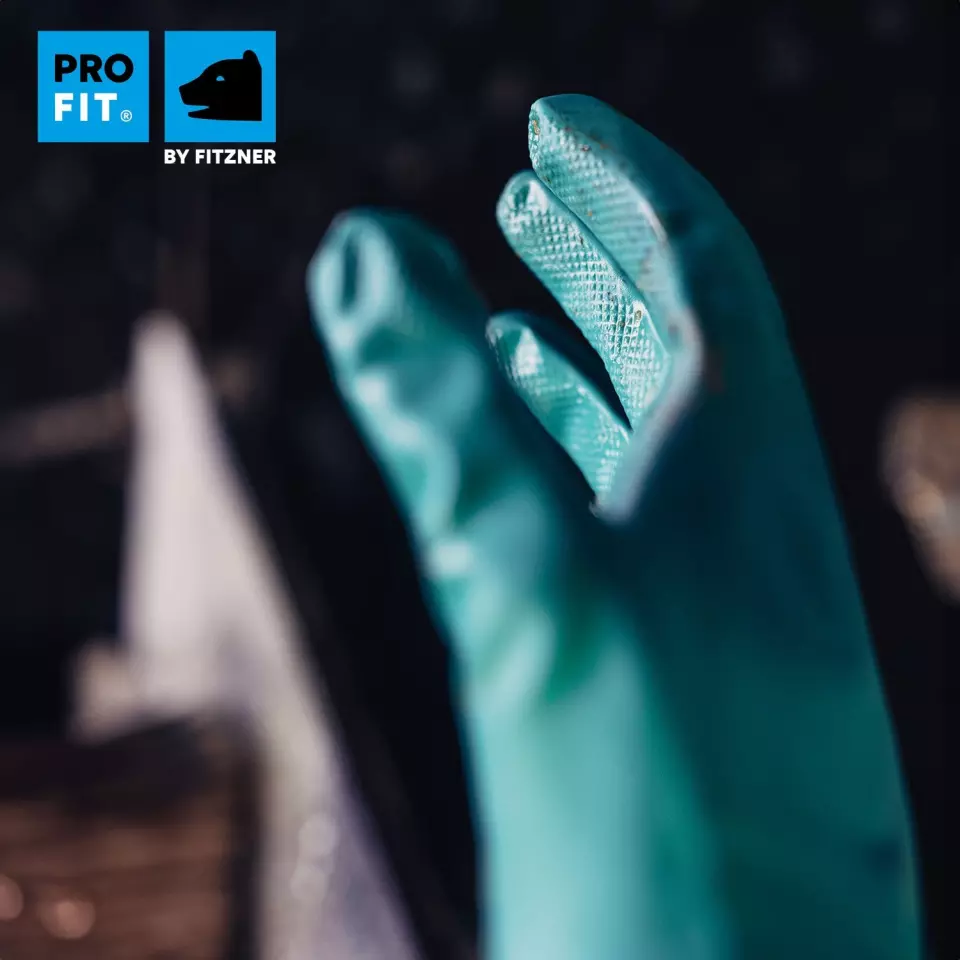
Grip Finish · Diamond
The surface texture or coating on the palm and fingers that determines how securely the gloves can grip tools, materials, and surfaces during work tasks.
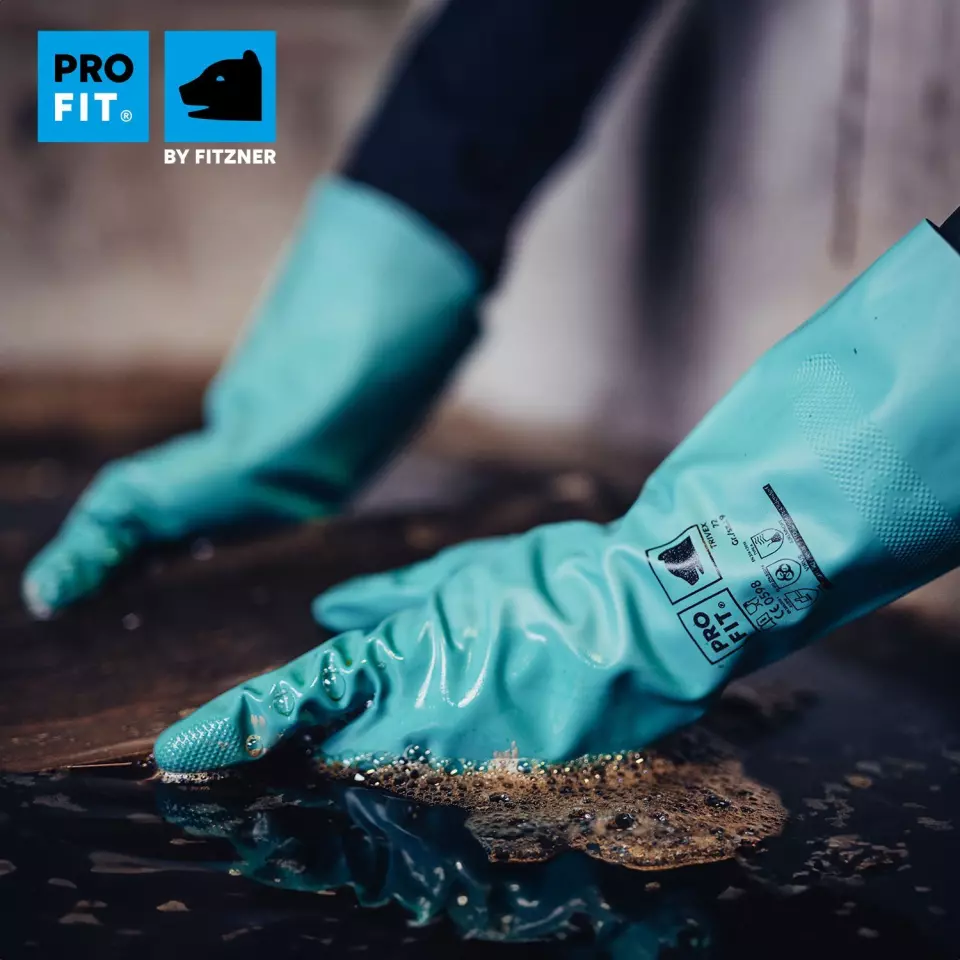
EN 388 · Tear Resistance Level 0, Puncture Resistance Level 1, Abrasion Resistance Level 3
Offers no rated protection against the material tearing apart.
Provides basic protection against punctures from blunt objects like splinters, not sharp points like needles.
Provides good resistance against scraping, scratching, and rubbing on rough or abrasive surfaces.
PRO FIT
Nitrile Chemical Protection Gloves, 12 pairs
Nitrile Chemical Protection Gloves, 12 pairs
(20)
21,02 €
Price per 12 pairs
1,75 € / pair
Choose size
Shipping fee is 7,95 € for orders under 1 200,00 €
Features You'll Love

Coating Material · Nitrile
The material applied to glove surfaces to enhance grip, protection, and durability for specific work conditions and hazards.

Liner Style · Flock Lined
The inner lining or coating that affects comfort, grip, insulation, and protection against chemicals or allergens.

Grip Finish · Diamond
The surface texture or coating on the palm and fingers that determines how securely the gloves can grip tools, materials, and surfaces during work tasks.

EN 388 · Tear Resistance Level 0, Puncture Resistance Level 1, Abrasion Resistance Level 3
Offers no rated protection against the material tearing apart.
Provides basic protection against punctures from blunt objects like splinters, not sharp points like needles.
Provides good resistance against scraping, scratching, and rubbing on rough or abrasive surfaces.
Product description
The Trivex Nitrile Chemical Protection Glove offers excellent protection when handling chemicals and is approved for food contact. With its cotton flock lining and specially molded honeycomb pattern, it guarantees optimal wearing comfort and safe handling. The combination of high durability and excellent chemical resistance makes it a reliable protective glove for demanding work environments.
Product Features:
- Cotton flock lining for increased wearing comfort
- Molded honeycomb pattern on palm and fingers
- Silicone-free manufacturing process
- Liquid-tight construction
- Optimal tactile sensitivity
Technical Details:
- Length: 33 cm
- Material thickness: 0.38 mm
- Food approved
- Very high chemical resistance
Areas of Application:
- Secure grip in dry environments
- Reliable handling in oily and greasy conditions
- Suitable for slightly damp working environments
Standards:
- EN 21420:2020
- EN 388:2016 + A1:2018
- EN ISO 374-1:2016 + A1:2018
- EN ISO 374-5:2016
- ISO 18889:2019
